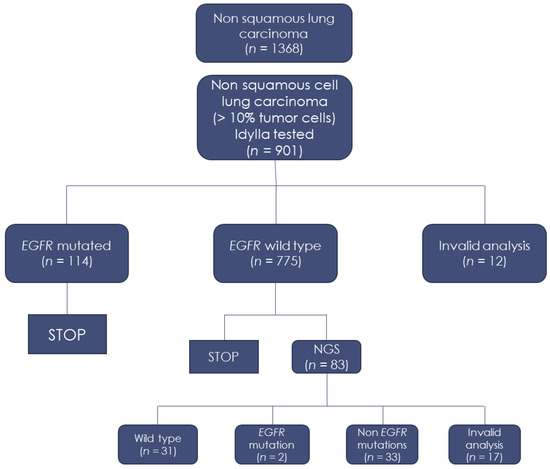
Cancers, Vol. 12, Pages 955: Targeted Assessment of the EGFR Status as Reflex Testing in Treatment-Naive Non-Squamous Cell Lung Carcinoma Patients: A Single Laboratory Experience (LPCE, Nice, France)
Cancers doi: 10.3390/cancers12040955
Authors:
Sandra Lassalle
Véronique Hofman
Simon Heeke
Jonathan Benzaquen
Elodie Long
Michel Poudenx
Elisabeth Lantéri
Jacques Boutros
Virginie Tanga
Katia Zahaf
Salomé Lalvée
Virginie Lespinet
Olivier Bordone
Jean-Marc Félix
Christelle Bonnetaud
Charles Marquette
Marius Ilie
Paul Hofman
Background: Assessment of actionable EGFR mutations is mandatory for treatment-naïve advanced or metastatic non-squamous lung carcinoma (NSLC), but the results need to be obtained in less than 10 working days. For rapid EGFR testing, an EGFR-specific polymerase chain reaction (PCR) assay is an alternative and simple approach compared to next generation sequencing (NGS). Here, we describe how a rapid EGFR-specific PCR assay can be implemented in a single laboratory center (LPCE, Nice, France) as reflex testing in treatment-naïve NSLC. Methods: A total of 901 biopsies from NSLC with more than 10% of tumor cells were prospectively and consecutively evaluated for EGFR mutation status between November 2017 and December 2019 using the Idylla system (Biocartis NV, Mechelen, Belgium). NGS was performed for nonsmokers with NSLC wild type for EGFR, ALK, ROS1, and BRAF and with less than 50% PD-L1 positive cells using the Hotspot panel (Thermo Fisher Scientific, Waltham, MA, USA). Results: Results were obtained from 889/901 (97%) biopsies with detection of EGFR mutations in 114/889 (13%) cases using the Idylla system. Among the 562 EGFR wild type tumors identified with Idylla, NGS detected one actionable and one nonactionable EGFR mutation. Conclusions: Rapid and targeted assessment of EGFR mutations in treatment-naïve NSLC can be implemented in routine clinical practice. However, it is mandatory to integrate this approach into a molecular algorithm that allows evaluation of potentially actionable genomic alterations other than EGFR mutations.

Δεν υπάρχουν σχόλια:
Δημοσίευση σχολίου